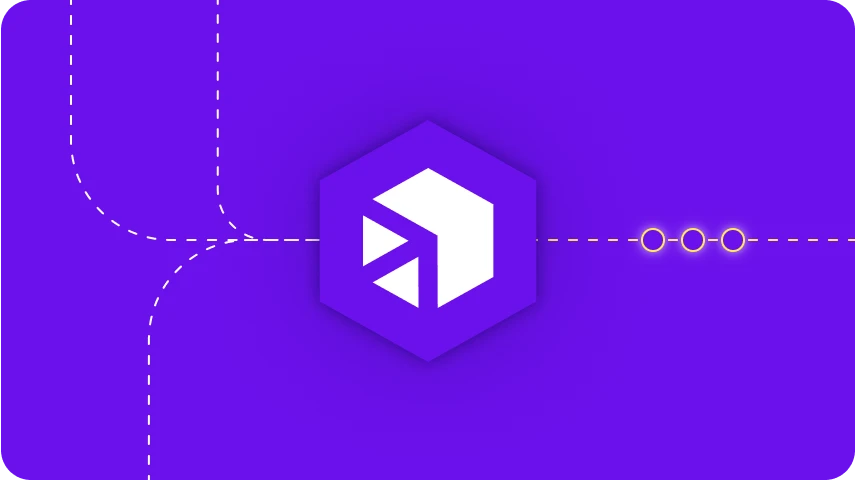dezembro 21, 2023
À medida que o volume e a velocidade dos dados continuam aumentando exponencialmente, as empresas enfrentam uma pressão crescente para se transformarem digitalmente. Elas precisam conectar dados, aplicações, sistemas e outras infraestruturas de forma integrada para manter sua relevância e lucratividade. A integração híbrida – que une serviços baseados em nuvem, sistemas on-premises e aplicações – é essencial para garantir essa conectividade.
Esses sistemas funcionam como uma ponte, conectando todas as partes em movimento. Como a maioria das empresas implementa novas tecnologias conforme a necessidade, é comum encontrar sistemas legados e aplicativos on-premises operando lado a lado com sistemas modernos em nuvem. Plataformas de integração híbrida ajudam a unir esses modelos distintos em um só ambiente.
>> Agende uma demonstração personalizada com nossa equipe de especialistas e veja como o iPaaS da Digibee trará eficiência ao seu negócio.
O que é integração híbrida?
A integração híbrida conecta aplicativos e dados, personas, domínios, endpoints, operações de negócios e modelos de implantação. Essa tecnologia viabiliza um engajamento coeso em toda a empresa, ao mesmo tempo em que oferece uma infraestrutura de TI modular, em que diferentes aplicações e sistemas podem ser trocados com facilidade – um imperativo para iniciativas de transformação digital.
A maioria das empresas depende da integração híbrida para conectar plataformas em nuvem e on-premises, dois modelos tecnológicos opostos que não se integram de forma intuitiva. Por exemplo, o software on-premises é instalado e executado na infraestrutura interna de hardware da empresa, enquanto o software em nuvem é armazenado e gerenciado em servidores privados ou públicos na nuvem.
Uma plataforma de integração híbrida une esses sistemas, facilitando a transferência de dados e resolvendo desafios como escalabilidade, exposição de dados e acesso não autorizado.
Quais são os benefícios da integração híbrida?
Além de apoiar iniciativas de transformação digital, a integração híbrida oferece uma série de benefícios para os negócios:
Escalabilidade
Aplicações on-premises são notoriamente difíceis de escalar. Quando a empresa precisa expandir ou ajustar sua infraestrutura tecnológica para apoiar uma nova oportunidade de negócio, é necessário investir tempo e recursos significativos para implementar a mudança. As plataformas e estratégias de integração híbrida promovem a coexistência de todos os sistemas, viabilizando a agilidade e a resiliência essenciais para a saúde do negócio.
Segurança e compliance
Independentemente dos modelos de segurança on-premises existentes, é provável que os provedores de nuvem ofereçam segurança aprimorada. Ao aproveitar grandes capacidades de armazenamento e práticas recomendadas na nuvem, as empresas se beneficiam com acesso facilitado aos dados dos clientes, redução de custos e menor risco de falhas nos sistemas, pois todos os dados são armazenados e backups são feitos externamente.
Velocidade
As plataformas de integração híbrida são rápidas, não porque sejam superiores aos ambientes de nuvem pública ou multi-cloud, mas porque permitem otimização de rede de forma fácil, reduzindo a latência e simplificando processos de transferência de dados. Tecnologias como edge computing e outros avanços economizam tempo de processamento essencial, aumentando a velocidade em toda a empresa.
Controle
Em um ambiente misto, as plataformas de integração híbrida facilitam o controle por parte da empresa. Por exemplo: iniciativas de transformação digital avançam no ritmo desejado, sem depender de contratos com fornecedores ou novos equipamentos para alcançar a agilidade necessária. Além disso, sistemas on-premises podem ser facilmente adaptados para atender às necessidades específicas da organização.
Custos de desenvolvimento reduzidos
Com sua escalabilidade inerente, a integração híbrida acelera o crescimento, o que, por sua vez, aumenta a receita. Por outro lado, sistemas legados dificultam o crescimento, resultando em custos de oportunidade mais altos. Outra vantagem de custo com a integração híbrida está no armazenamento de dados. As empresas podem escolher entre modelos de armazenamento em nuvem ou on-premises para ajudar a controlar os gastos.
Melhor experiência do cliente
Por fim, e o mais importante para muitas empresas, a integração híbrida promove uma experiência evoluída e sem fricção para clientes e parceiros. Com uma infraestrutura de TI modular, novas tecnologias são facilmente implementadas para aprimorar a experiência do cliente, o que, por sua vez, gera fidelidade e retenção, protegendo e ampliando participação de mercado e lucratividade.
Quais são os principais recursos das plataformas de integração híbrida?
Os principais recursos das plataformas de integração híbrida são:
Gerenciamento do ciclo de vida da API
O gerenciamento de APIs dentro de uma plataforma de integração híbrida combina os benefícios de um ambiente SaaS com as capacidades ampliadas de controle de um ambiente on-premises. Gateways de API podem ser criados em um data center privado, enquanto os demais componentes (interfaces de usuário, portal do desenvolvedor, análises, etc.) permanecem na nuvem.
Integração de aplicações e dados
As plataformas de integração híbrida reduzem o tempo de desenvolvimento necessário para que as aplicações funcionem em conjunto. Com práticas que economizam tempo, como o uso de low-code e capacidade de arrastar e soltar, o desenvolvimento se torna menos trabalhoso, permitindo que desenvolvedores e arquitetos se concentrem em iniciativas de transformação digital em vez de tarefas de codificação fragmentadas.
Mensagens e arquitetura orientada a eventos
À medida que a computação em nuvem se expande, as arquiteturas de aplicações evoluíram, tornando-se mais modulares e portáteis, facilitando sua implantação e execução. Os custos de infraestrutura são reduzidos, enquanto a eficiência operacional aumenta. Com a arquitetura orientada a eventos, o tempo de execução e os protocolos são desacoplados, permitindo uma maior escalabilidade.
Transferência de dados em alta velocidade
As plataformas de integração híbrida empregam um modelo de transferência em lote para transferir dados rapidamente. Com altas taxas de transferência de dados, tarefas mais complexas podem ser executadas na rede. Por exemplo, streaming on-line.
Monitoramento e gestão
Com a integração da nuvem híbrida, o monitoramento e o gerenciamento são padronizados em todas as plataformas. A administração é simplificada para desenvolvedores e arquitetos, com um modelo centralizado implementado para toda a operação.
Orquestração
Com a crescente adoção da computação em nuvem, máquinas virtuais, redes e armazenamento em todo o mundo, os processos manuais não são mais capazes de lidar com a complexidade das pilhas de nuvem modernas. Com a orquestração da nuvem híbrida, a automação está no centro dessas atividades operacionais de nível superior.
O que avaliar para escolher a plataforma de integração híbrida certa para o seu negócio
Até recentemente, as capacidades de integração híbrida eram fragmentadas, dependendo de diferentes componentes dentro de ferramentas independentes, como soluções de gerenciamento de API, iPaaS e ESB. Hoje, as empresas estão implementando tecnologias desenvolvidas especificamente para ambientes híbridos, onde aplicativos on-premises e baseados em nuvem coexistem facilmente para apoiar o negócio.
Em 2018, o Gartner previu que o trabalho de integração consumiria 50% do tempo e do custo de construção de uma plataforma digital. A julgar pelo mercado de integração atual, a análise está certa, já que as empresas estão mesmo priorizando a integração para apoiar seus objetivos principais de negócios.
Se você estiver avaliando plataformas de integração híbrida para sua empresa, certifique-se de que a tecnologia forneça:
- Facilidade de implementação que requer recursos mínimos e é concluído em semanas ou meses
- Suporte e manutenção oferecidos para a plataforma para garantir que os custos não aumentem com o tempo
- Compatibilidade com sistemas e soluções existentes para se proteger de tempo de inatividade desnecessário
- Segurança que atenda às necessidades atuais e futuras do seu negócio
- Monitoramento e relatórios para garantir que todas as partes interessadas estejam cientes do desempenho do sistema (em tempo real e historicamente)
Como a Digibee ajuda
O iPaaS da Digibee é uma plataforma de integração nascida na nuvem que moderniza a forma como as empresas conectam aplicações, dados, personas, domínios, endpoints e modelos de implementação.
A plataforma de integração Digibee inclui:
- Abordagem low-code para construir workflows
- Suporte na prática
- Gerenciamento e monitoramento integrados
- Recursos drag and drop para acelerar os prazos
- Flexibilidade com preços pagos conforme o uso
Para obter mais informações sobre como a Digibee pode evoluir o seu ambiente de integração híbrida, solicite uma demonstração. Você também pode fazer um tour pela plataforma e ver como ela funciona.









